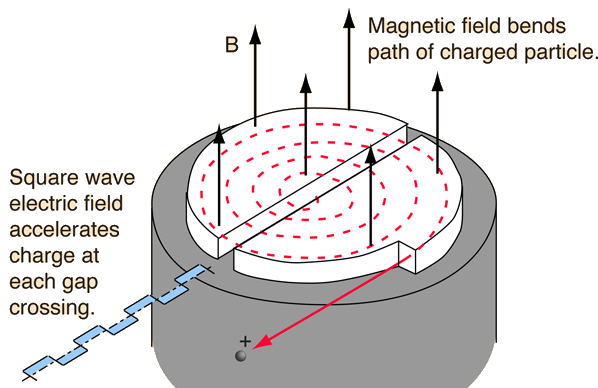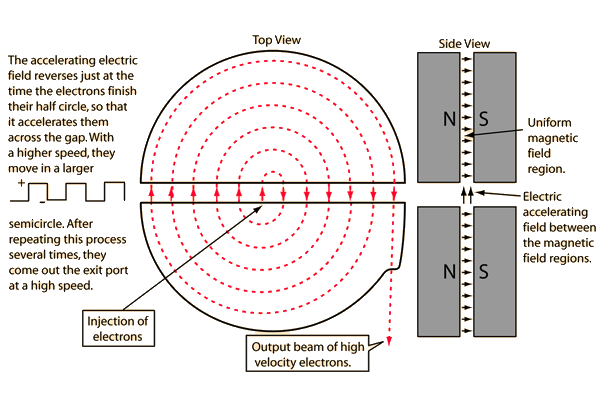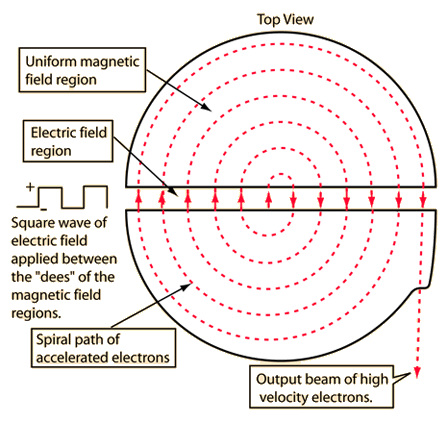Cyclotron
The cyclotron was one of the earliest types of particle accelerators, and is still used as the first stage of some large multi-stage particle accelerators. It makes use of the magnetic force on a moving charge to bend moving charges into a semicircular path between accelerations by an applied electric field. The applied electric field accelerates electrons between the "dees" of the magnetic field region. The field is reversed at the cyclotron frequency to accelerate the electrons back across the gap.

When the cyclotron principle is used to accelerate electrons, it has been historically called a betatron. The cyclotron principle as applied to electrons is illustrated below.

| Note: these illustrations are grossly simplified for demonstration of the cyclotron principle. In current practice sine waves are used for the acceleration and the "dees" are resonant cavities favoring one frequency. The magnetic fields are typically altered to keep the acceleration condition optimized, even when speeds become high enough that relativistic corrections are necessary. |
| Magnetic interactions with charge | Magnetic force applications |
Electromagnetic force
Magnetic field concepts
| HyperPhysics***** Electricity and Magnetism | R Nave |


